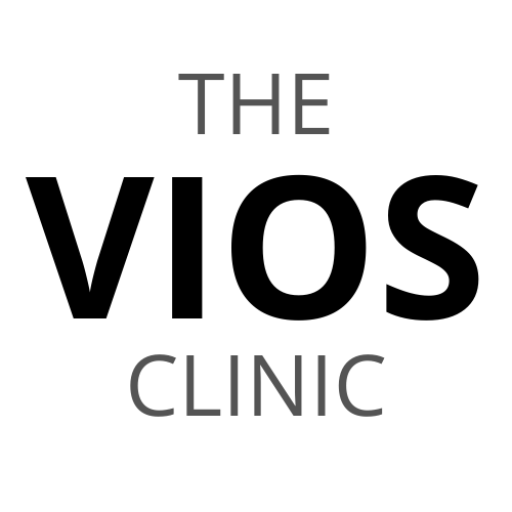Modern medicine in the United States is a complex landscape, with a myriad of healthcare options available to patients. However, amidst this maze of choices, two distinct service offerings have emerged as dominant players: corporate healthcare through urgent clinics and independent private practices.
These contrasting models represent two divergent approaches to patient care, each with its own set of advantages and disadvantages. By understanding the fundamental differences between these two systems, patients can navigate the intricacies of modern medicine more effectively and make informed decisions about their health.
The dwindling number of primary care providers nowadays is primarily due to major healthcare corporations and insurers buying out independent practices and PCPs. Maintaining independence is vital for primary care providers who wish to remain competitive against these corporate healthcare practices.
This entails understanding what sets these practices apart from most independent ones in terms of patient perspective, as well as finding ways to bridge any existing gaps. Furthermore, it requires leveraging the unique benefits that independent primary care doctors offer their patients.
Based on survey findings from 1,000 U.S. patients, it is evident that most individuals do not have a specific inclination towards either independent or corporate healthcare providers.
Nevertheless, they highly appreciate the individualized approach and exceptional level of care delivered by privately owned practices. On the other hand, the time-saving benefits and convenience offered by corporate healthcare establishments continue to be major attractions for patients.
Most Patients Don’t Care Who Owns the Practice, they just want their Money’s Worth
The ownership of a medical practice, whether it be independent or corporate, does not significantly influence the preferences of over half (54%) of patients when seeking medical care.
According to this data, more than one-third of patients are actively interested in finding primary care providers who operate independently. Additionally, the data suggests that by implementing effective marketing strategies that emphasize the unique advantages offered by independent providers over corporate practices, there is a potential to influence the decision of such patients.
Why Do Some Patients Prefer Corporate Healthcare Practices?
Patients who recently sought treatment at walk-in clinics located within pharmacies or urgent care practices reported that the most significant perks of choosing these healthcare providers were the quick turnaround time and cost-effectiveness of the care received.
The predominant responses centered around the aspect of efficiency: 66 individuals mentioned the ability to schedule appointments more swiftly, 51 individuals highlighted faster response times from doctors, and 42 individuals emphasized quicker examination processes.
This data clearly shows that one of the major perks of these practices is faster healthcare services. You usually expect big corporate healthcare organizations with fancy technology and lots of staff to be quick on their feet.
But from a patient’s point of view, speed matters because it affects how much they have to spend out-of-pocket and how much time they have to take off work for doctor visits.
Why Do Some Patients Prefer Independent Private Practices?
Fortunately, patients who recently visited an independent primary care provider reported significantly greater advantages compared to those who sought medical assistance at a corporate healthcare practice.
These patients emphasized the superior quality of care and the establishment of more personal relationships with their providers, rather than merely prioritizing convenience and efficiency during examinations.
Notably, among these patients, 81% expressed that the primary benefit of having a primary care provider is their acceptance of the patient’s insurance.
However, even more, crucial is the fact that 64% of patients affirmed that their independent primary care doctors deliver a high standard of care, in stark contrast to only 26% who made this claim about walk-in clinics and a mere 19% for urgent care facilities.
Leveling the Playing Field in Healthcare
Although corporate healthcare practices may excel in providing prompt patient care and efficient examinations, independent primary care providers have the upper hand when it comes to building trust and fostering long-standing relationships with their patients.
While small practices can leverage various tools and marketing techniques to enhance their efficiency, urgent care facilities and walk-in clinics face a greater challenge in gaining the same level of confidence from their patients.
Essential Digital Tools in Your Practice
Self-booking
By strategically implementing the appropriate software tools, you can enhance the efficiency of the patient journey within your practice. Incorporating automated systems for appointment scheduling, check-in, and intake can significantly expedite the process of getting patients into your office and examination rooms.
Alternatively, investing in a reliable patient portal enables swift communication with patients, surpassing traditional methods. Frequently, patients forego scheduling appointments due to seeking immediate responses to their straightforward inquiries.
Automated Customer Support
In these situations, patients have the option to utilize the portal for direct messaging to inquire about their concerns. This allows you or a member of your team to promptly respond. Additionally, many practices are now able to bill for these individual communications, making it easier for providers to justify dedicating time to communicate with patients.
Telemedicine
Furthermore, telemedicine is an essential aspect that should not be overlooked. If you are not already offering remote consultations, you are missing out on valuable opportunities. Patients greatly appreciate the convenience and efficiency of phone and/or video conferencing tools, which often attract them to corporate providers initially.
Once you have established an efficient system and effective strategies to provide prompt healthcare services, it is essential to assess how you promote your medical practice.
Make it widely known that your practice is independent and locally owned, emphasizing its strong ties with the community by highlighting that your employees are residents in the area as well. By doing so, you can proudly convey that choosing your services means supporting a small business rather than contributing to a faceless corporate structure. Furthermore, capitalize on one distinct advantage independent primary care physicians possess – establishing meaningful personal connections with their patients.
Conclusion
In conclusion, while big healthcare giants may have the advantage of size and resources, small private practices still have a competitive edge in several key areas. Their personalized care, flexibility, and ability to build strong relationships with patients can lead to higher patient satisfaction and loyalty.
Additionally, small private practices often have lower overhead costs and can offer more affordable healthcare options. As the healthcare landscape continues to evolve, it is crucial for small private practices to focus on leveraging their unique strengths and delivering exceptional care. By doing so, they can not only survive but thrive in an industry dominated by big healthcare giants.
Are you ready to step up to the challenge? Contact us to know more about leveraging yourself against fierce corporate healthcare, today by contacting us at [email protected]
BLOG AUTHOR
Dr. Ismail Sayeed
Dr. Sayeed is the Medical Director of ViOS, Inc. He is a deeply committed physician entrepreneur & medical blog writer. While building the global infrastructure of the VIOS Clinic, he is dedicated to educate people on the potential of specialist telemedicine for managing chronic diseases.
Read more about him in his author bio

